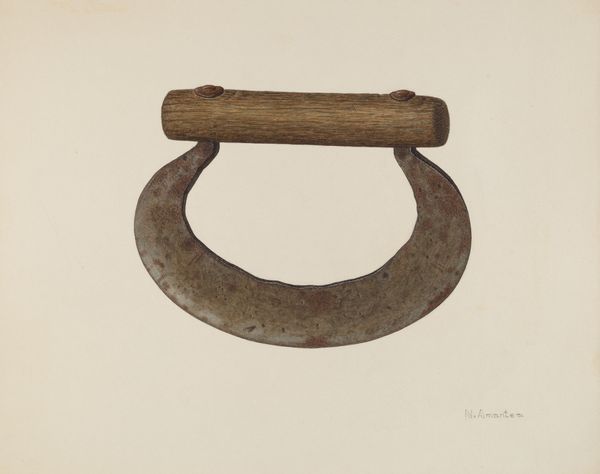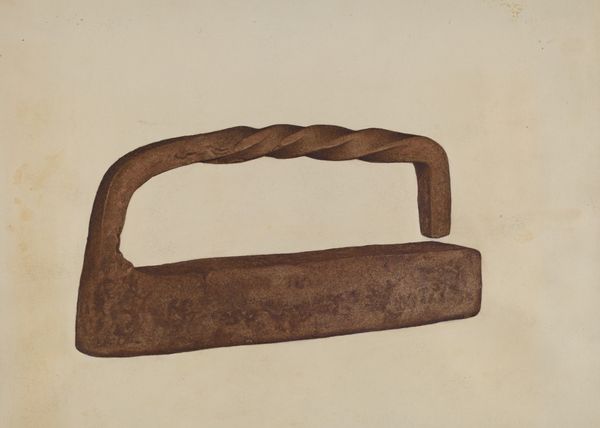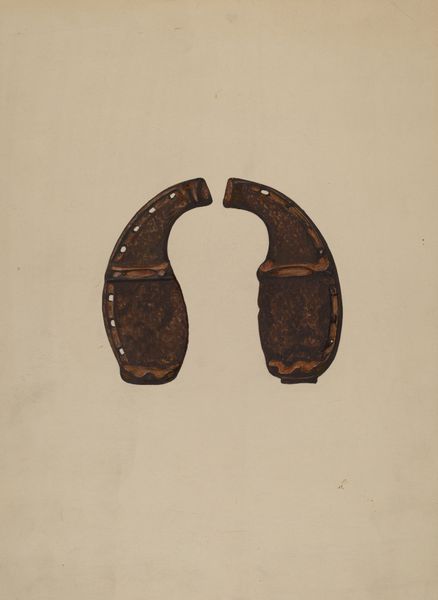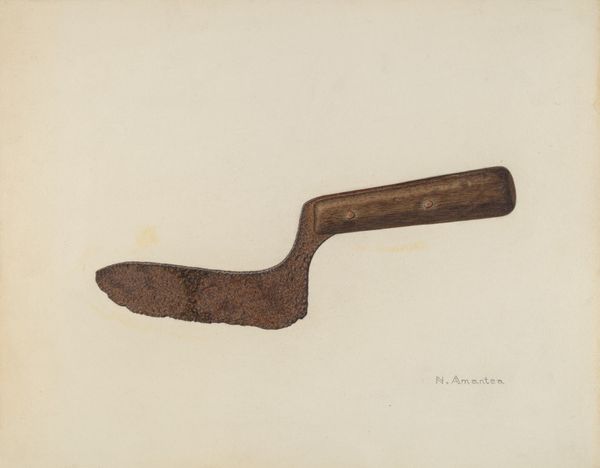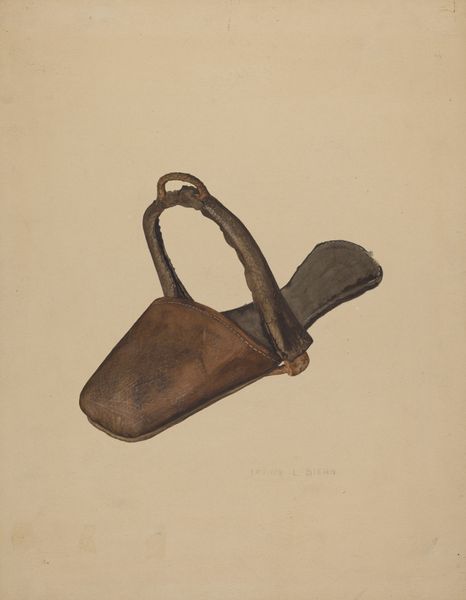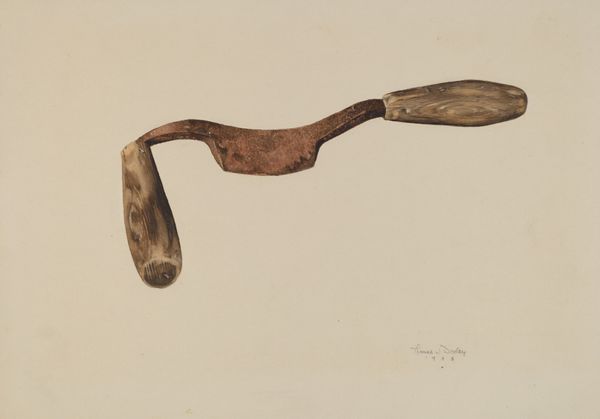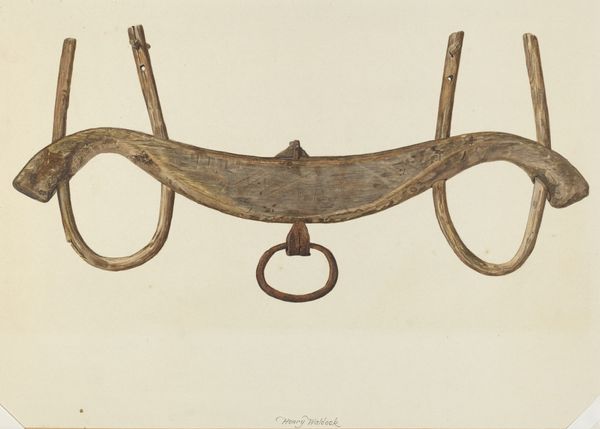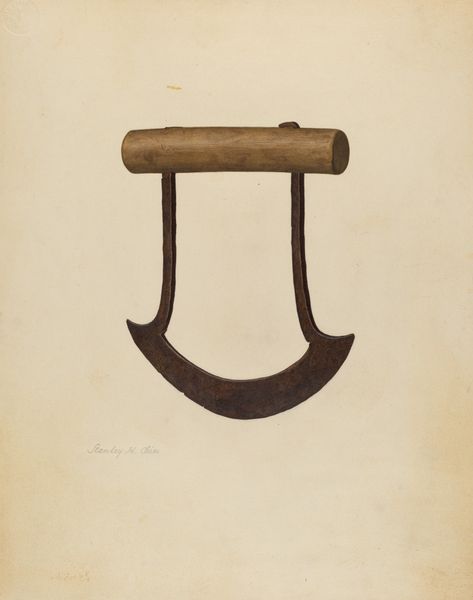
drawing, watercolor
#
drawing
#
watercolor
#
watercolour illustration
#
watercolor
#
realism
Dimensions: overall: 22.8 x 28.8 cm (9 x 11 5/16 in.) Original IAD Object: 6 7/8" long; 6 1/4" high; blade: 3/32" thick
Copyright: National Gallery of Art: CC0 1.0
Editor: So, this watercolor and drawing, called "Chopping Knife," was made around 1941 by Nicholas Amantea. It feels so simple, almost austere, yet that rust…it tells a story. What do you make of such a humble object elevated like this? Curator: Humble, yes, but look closer! The artist’s clearly smitten. The rust isn't decay, it’s character. That perfectly rendered wood grain! You see how the watercolor almost…breathes? Amantea sees a certain nobility here. It makes me think of that Monk line from *Thelonius Monk* “A genius is the one most like himself.”. What purpose would a realist take for portraying such an item if not for what it suggests? Editor: Nobility? Hmm. It's more... melancholic to me. Maybe it’s because it makes me think of cooking for one. You know, solo dinners, past generations… Did realism during the ‘40s often focus on everyday objects like this? Curator: It’s funny you mention melancholic…Maybe nobility isn’t quite the right word. Familiar? Perhaps. And the ‘40s… There was this almost photographic urge to capture things, to *see* them clearly during wartime and its after-shock, whether the mundane or majestic. This makes me think of egg tempera, so perfectly preserved from ages ago.. This may be Amantea showing the power behind everyday rituals, wouldn’t you say? Editor: I get that! It's a frozen moment. I wouldn't have thought about the tempera comparison. Curator: The image becomes this vessel that evokes something unspoken - memories from the war or, in a hopeful lens, maybe looking forward to shared memories that could have been? Editor: Food for thought – literally! I appreciate seeing this in a completely different light now. Thanks!
Comments
No comments
Be the first to comment and join the conversation on the ultimate creative platform.
